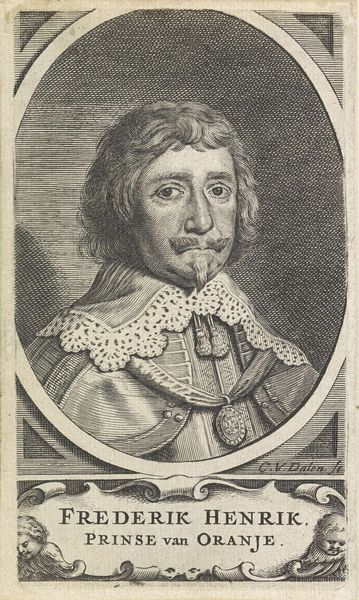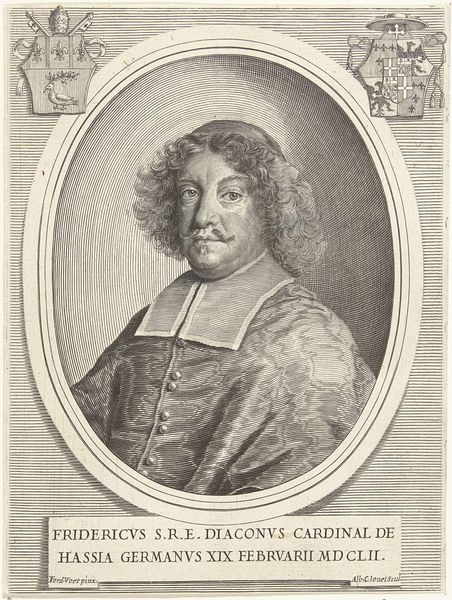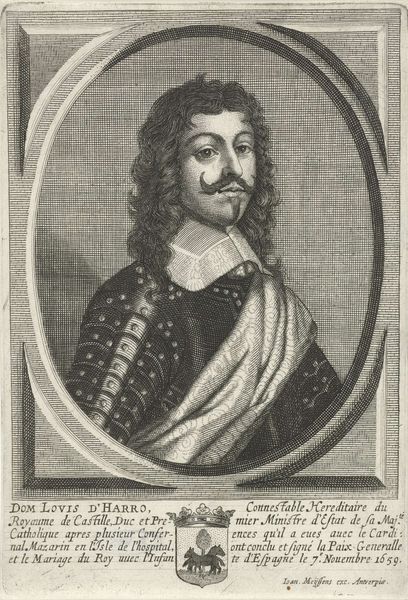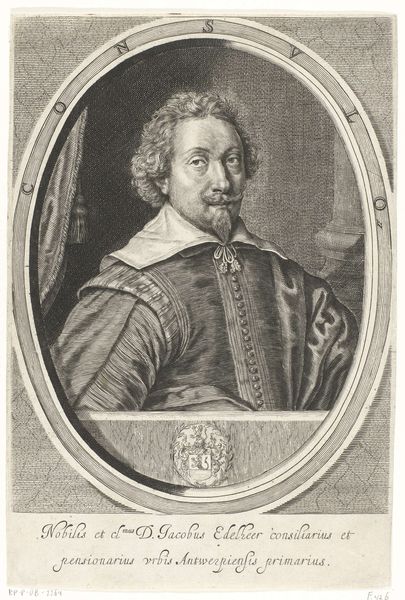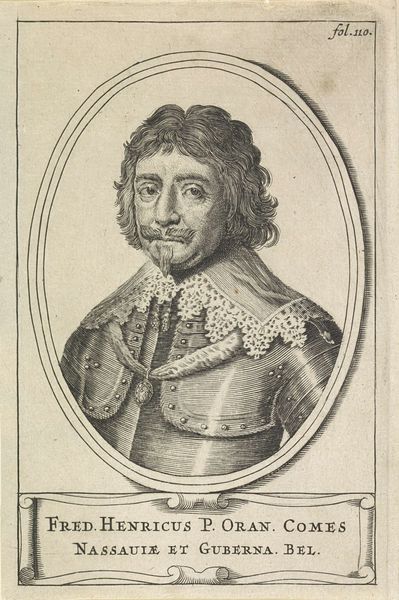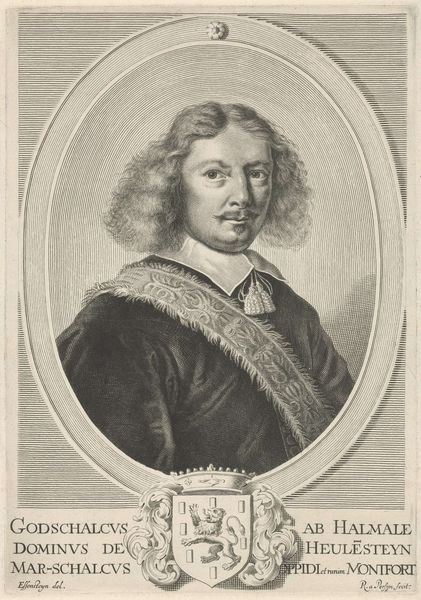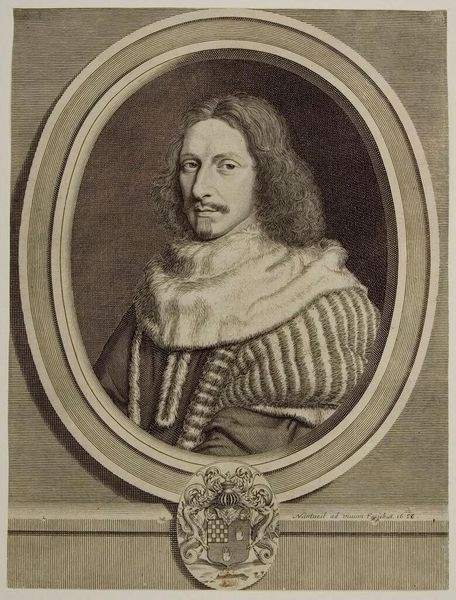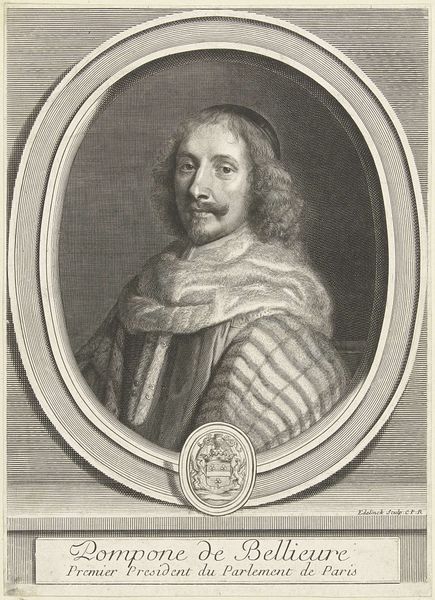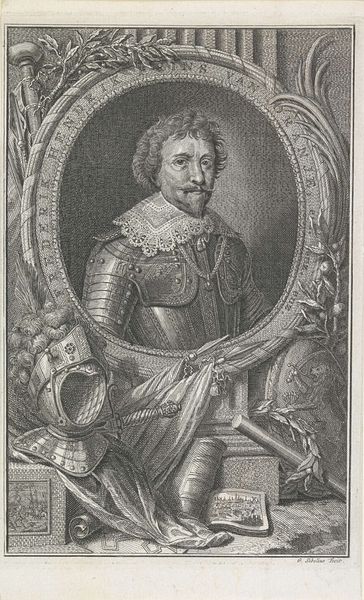
print, engraving
#
portrait
#
baroque
# print
#
old engraving style
#
engraving
Dimensions: height 325 mm, width 208 mm
Copyright: Rijks Museum: Open Domain
Editor: We’re looking at a print, “Portret van Francisco de Melo” made sometime between 1604 and 1670 by Crispijn van de Passe the Younger. It’s currently held at the Rijksmuseum. The Baroque style portrait has a serious mood, a kind of stiff formality that strikes me. How do you interpret this work? Curator: Well, its formality speaks volumes, doesn’t it? Think about the socio-political climate: Melo was Governor General for the King of Spain. Baroque portraiture, especially prints like this one meant for wider circulation, were tools of power. Consider how the inscription frames him— literally and figuratively. What does it tell us about how Melo wanted to be perceived, or how Spain wanted him to be seen? Editor: I suppose the Latin inscription emphasizes his credentials, creating this image of legitimacy. The pillar in the background on the right of his head feels significant as a kind of symbol, too, doesn't it? Curator: Exactly! That classical column is a deliberate invocation of Roman authority. But also, prints democratized imagery; while only some could commission painted portraits, engravings allowed for broader dissemination of power and influence. Did this broader reach alter perceptions of class? Editor: That’s interesting – I hadn’t thought about that! It complicates the idea of the elite because prints would let a far greater variety of people become acquainted with Don Francisco de Melo's likeness and achievements. So this artwork is interesting in how it served the ruling class, and how it redefined their public image and impacted the wider public? Curator: Precisely! It allows us to investigate how identity, authority, and propaganda intersect in the early modern period. Editor: I'll certainly view such images with more awareness in the future. Thanks!
Comments
No comments
Be the first to comment and join the conversation on the ultimate creative platform.
